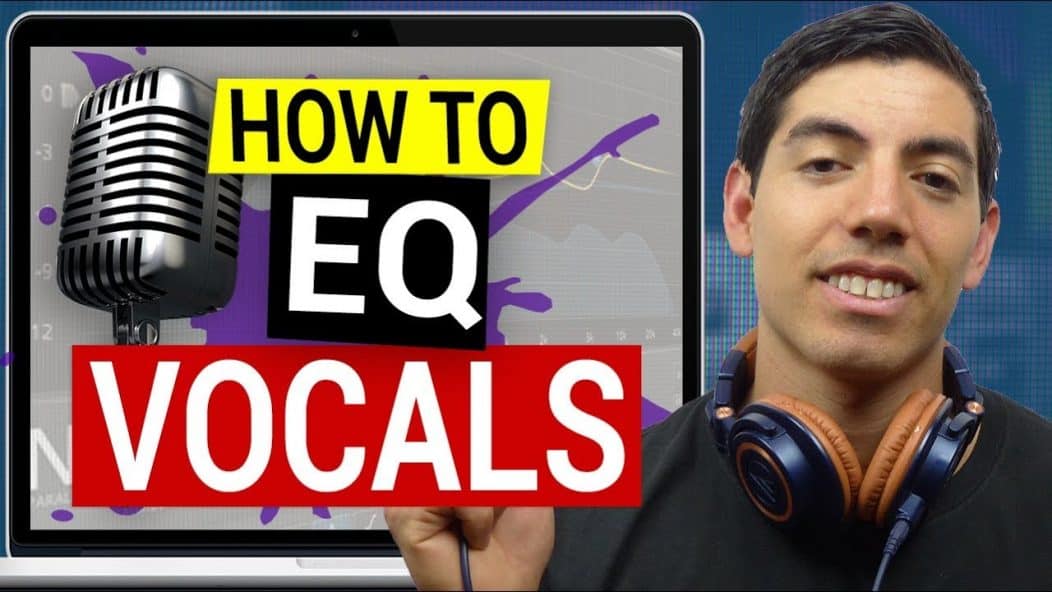by Daniel Strongin 24 June 17
Transcript
In this tutorial I'm going to explain talk about mixing vocals and how to EQ your vocals. Vocals are probably one of the most important elements in your track. They are what the listener of your song is going to remember most because hearing another human interacting with you in a musical way is the most natural form of musicality.
Since vocals are such an important part of your track it is crucial to have them clean, upfront, and powerful in the mix. In my video on this subject I use my DAW to EQ a raw vocal so viewers can see what it's like to take a freshly recorded vocal and clean it up. The example in the video tutorial starts with the raw vocals with no processing on them whatsoever and then shows how to do the vocal processing.
With a Vocal Sample from a Female Vocalist, Try Cutting the Low End of the Track
First, you need to listen to your vocals and then we'll go over the EQing of these vocals. In the video example you can hear the unprocessed vocals are very muddy and have that boxy-type sound. To clean this up and really make it shine, I use an EQ fabfilter pro-q 2. I always start by cutting the low end out of the track. Now since the vocalist is usually a female, I go around 95 hertz. Next, I listen to the vocal so I can hear where it actually makes a difference in the cut. Then, I might even go higher than that, if it doesn’t sound good to me. I want the vocal processing to be unnoticeable and so I usually just cut out the low frequencies that muddy up the mix.
Using Vocal EQ to Remove Boxiness
Next, I clean up any boxiness in the vocal. To make it easier to hear the boxiness, I usually boost it up a bit. When I hear a really boxy area I remove that, but I don't want to cut out too many frequencies. I usually put the EQ up a little bit just to tighten it up. Now I listen again to see how much I want to reduce it. In the video example, I set it around three decibels. If, after EQing the vocals I still hear some more boxiness, I might put an EQ cut around the 254 Hertz as well. Then I once again do some EQ sweeping to hear what frequencies I want to remove. When I hear something really sharp that adds to the boxiness and muffled sound, I remove this. Then I listen again to hear what the EQ has done--to see if it's made a positive impact on the sound listener.
Final Steps in Vocal Processing
Even if the first two steps definitely improved my track some boxiness and muddiness may remain. If, when I listen to it again, the mix is not quite as clean as I would like it to be I go wone step further. To get more improvement I move up the frequency range. This is my usual method-- I start with the low frequencies and then work my way up to the high frequencies. So, once again I do more EQ sweeping to find where II can still hear a little boxiness. This time, I usually only need to remove a little bit, because I already removed quite a lot. I just want to tighten up the EQ. That will clean it up just a little bit more. Then I check out the mid to high range, too. I use EQ sweeping to find any area that needs to be cleaned up. For example, any part that sounds too nasally. In the mid range it can really get nasally. If I find this in my mix, I definitely want to remove some of the nasally sound. Then, finally, I boost the high-end of it to get a nice clean, crisp sound. I usually use a high shelf here to add a nice little brightness to the vocal.
Reviewing the Vocal EQing
After completing your EQing, you should compare the vocal without the EQing to the finished sound, so you can hear the improvement after the muddiness and nasal sound is gone. It should sound crisp and clear. Once it does, you are ready to go.




